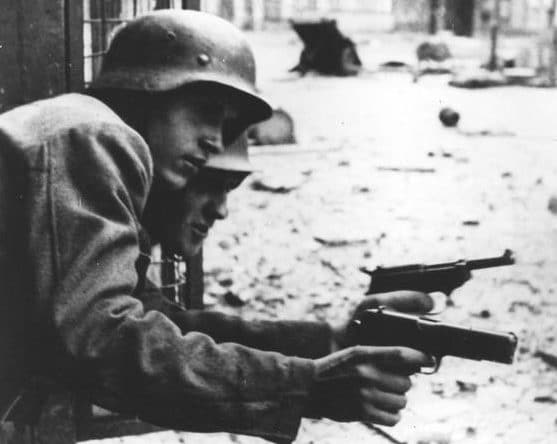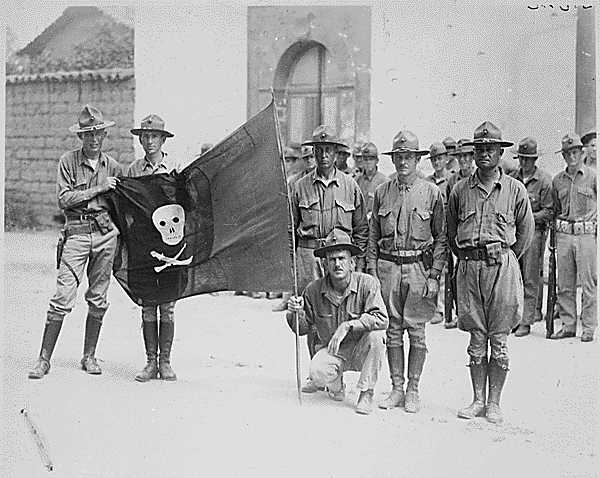While it’s easy to focus on western Europe, Russia, and the Pacific Campaign during World War II, we often forget how far-reaching the war was. With so many different countries fighting each other on so many battlefields, it’s not that big of a stretch to imagine forces on opposite sides of the war using the same guns.
The famed Hi-Power is likely the flag bearer of a gun used by both sides. It’s famously remarked as a gun used by the British, Canadians, and even Americans in limited numbers and adopted by Nazi Germany when Belgium fell. The Hi-Power gets all the fame, but it wasn’t the only gun sued by both sides. Today I’ve gathered seven weapons that served on both sides of World War II.
I’m ignoring captured weapons or partisan use and solely focusing on countries that adopted weapons and used them in the war.
The Mauser C96
The 96 in C96 stands for 1896, so by WWII, this gun was an old hat and had been around the world for a time or two. It was an early successful semi-auto pistol, and it’s sometimes nicknamed the Broomhandle Mauser due to the round grip. It’s not a surprise that Italy, Germany, China, Egypt, Iran, Iraq, Japan, and more carried the pistol into combat. Also, when war pops off, logistics are seemingly always behind, and many countries don’t upgrade their handguns very often anyway.

The C96 worked and worked well. The weapon came in all manner of calibers and was produced extensively under different contracts. Options included stocks and even a machine pistol variant.
Related: Why is the Glock 19 pistol the favorite of the world’s most elite forces?
Suomi KP/-31
The Suomi KP/-31 often gets overshadowed by other WWII SMGs, but it’s one of the best of the war. The Finnish allied themselves with the Nazis in World War II, primarily to resist the Russian invasion. It’s not a surprise the Nazis wielded the Suomi KP/-31 beside the Finns. Although, they weren’t the only forces wielding the gun, as the Croatians and Danes also clung to the Suomi.
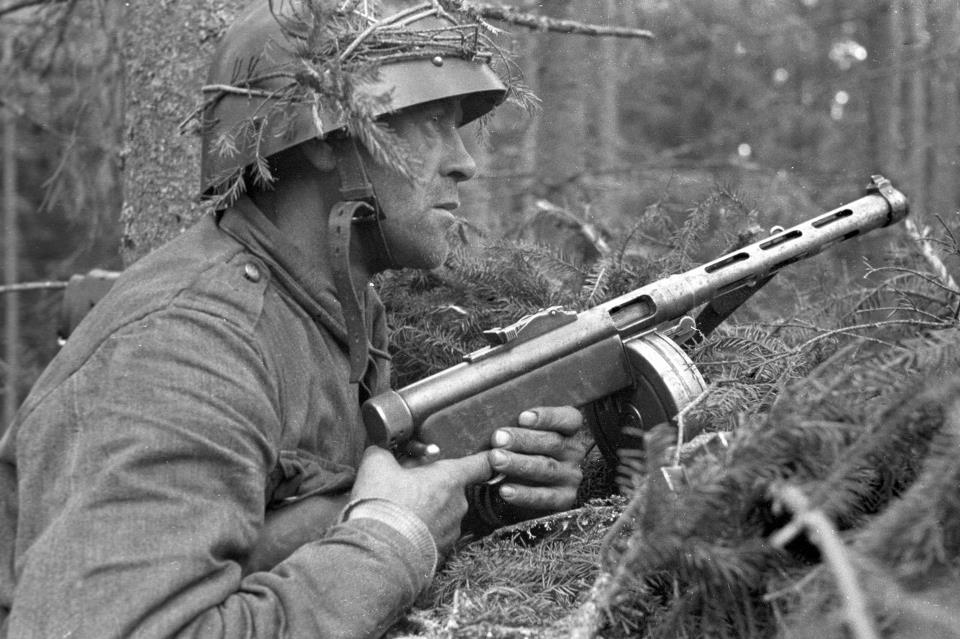
The Finnish did fight the Nazis during the Lapland War, however, and both forces likely wielded this SMG against each other. The Suomi KP/-31 was a straight blowback 9mm submachine gun that famously used a massive 71-round drum magazine. It offered a lot of firepower to the individual soldier and bordered on being a squad support submachine gun. The Russians used inspiration from the Suomi in producing the PPSH-41.
Walther P38
The Walther P38 was the official sidearm of Nazi Germany and, surprising no one, it armed many of the Axis powers. The Walther P38 found its way into the hands of Hungarian troops, Finnish troops, and most German allies. Additionally, the pistol was used by Croatian forces to resist Nazi Germany.

The Walther P38 uses a unique system that incorporates a short recoil function with a hinged locking piece-assisted breechblock. The P38 was the first locked-breech pistol to use a DA/SA action and featured a decocker to lower the hammer manually. It used a single stack eight-round magazine, and the Germans chambered the weapon in 9mm Parabellum. The Walther P38 stayed in service for a very long time after World War II.
Luger P-08
The Luger’s distinct look and German association often put it in the hands of Nazis in film and media, but by WWII, the pistol had been around for over 40 years. Yet, by World War II, the Luger pistol was no longer the main sidearm of Nazi Germany.
However, stores of Lugers from World War II popped up in the second world war. Germans, Fins, Japanese, and more Axis powers got their hands on this early semi-auto design. Outside of the Axis powers, Croatia, New Zealand, and even British Malaya used the P08.

The weapon came in various calibers, with 9mm being the most common. The short-recoil toggled locked system worked but was complicated and prone to issues in the field. However, the old beast chugged through the Second World War on both sides.
Madsen Machine Gun
The Madsen Machine gun was a Danish light-machine-gun design that became popular during World War I. Over 34 countries purchased it, so it’s not a big surprise it popped up on both sides of the war. The Germans used the weapon in 7.92. The Russians used their own in 7.62x54R. The Japanese captured them from the Dutch, and the Brazilians carried them on expedition as well.
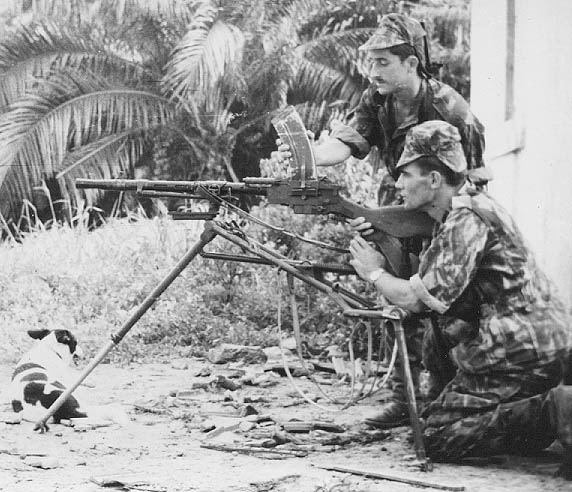
The Madsen was a very WWI light machine gun with a top-loading magazine and man-portable design. While expensive, the weapon worked and was reliable in the field. The Danes couldn’t make up their mind if they wanted a short-recoil or long-recoil weapon, so they created a mixed-recoil weapon that used elements of both. While limited in firepower by its magazine-fed design, the weapon stayed in service well beyond WWII.
Related: The FN Evolys – Carving its spot in the machine gun world
Mauser Karabiner 98K
Any fan of first-person shooters in the late 90s and early 2000s knows the Kar98K. This was the standard German infantry rifle. It also made its way to the Croatians and Chinese. As you’d expect, plenty of Germany’s allies packed the KAR98K, as did numerous resistance forces standing up to Nazi tyranny.

The Mauser action became a legendary design for bolt action rifles and was widely licensed and copied around the world. The Karabiner 98K was a slightly shorter model of the original Gewehr 98. They trimmed about 6 inches off the barrel to modernize the rifle. The Kar98K proved robust, reliable, and quite accurate.
Oerlikon 20mm Cannon
Oh man, I can’t leave the 20mm cannon with a name I can’t pronounce off the list. The Oerlikon 20mm Cannon saw use by the Germans, Polish, Japanese, Brits, Canadians, and Americans. It found its way onto fighter planes, boats, anti-aircraft positions, and more.
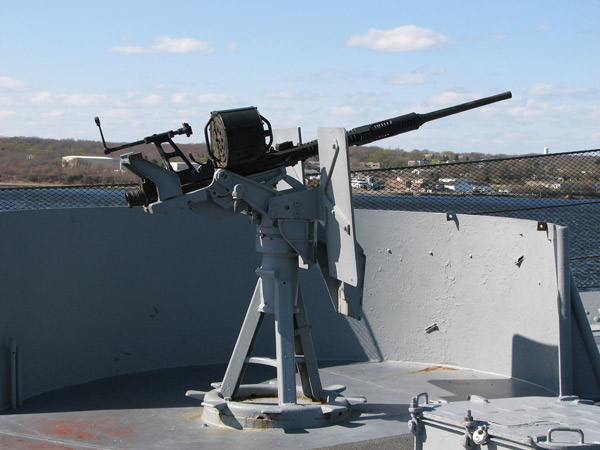
This autocannon fired between 450 and 1,000 rounds per minute, depending on the model. The weapon used an advanced primer ignition blowback system, which was simple, despite its name. Weapons of this size and caliber usually rely on a more complicated system, but the Oerlikon’s simplicity made it popular with both sides and is even still in use today with some naval forces.
The war of both sides
The world-encompassing nature of World War II ensured that we’d see a bevy of small arms, anti-armor, anti-air, and eventually potentially world-ending weapons. It’s not a big surprise that we saw a wide variety of weapons serve on both sides of the war. I’m sure I missed some. If you know of any I missed, drop them in the comments and let me know.
